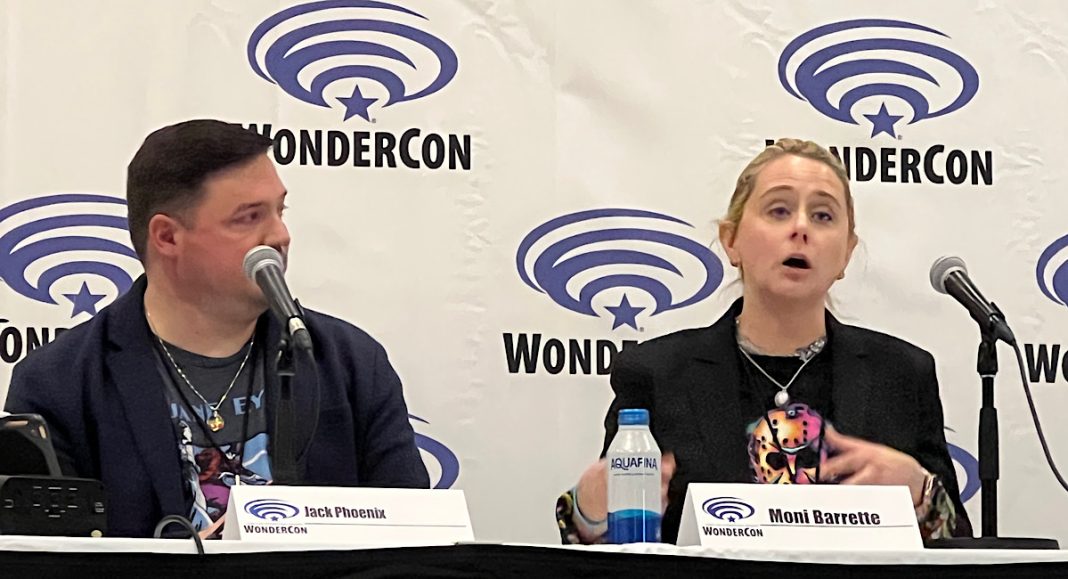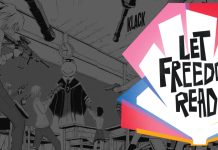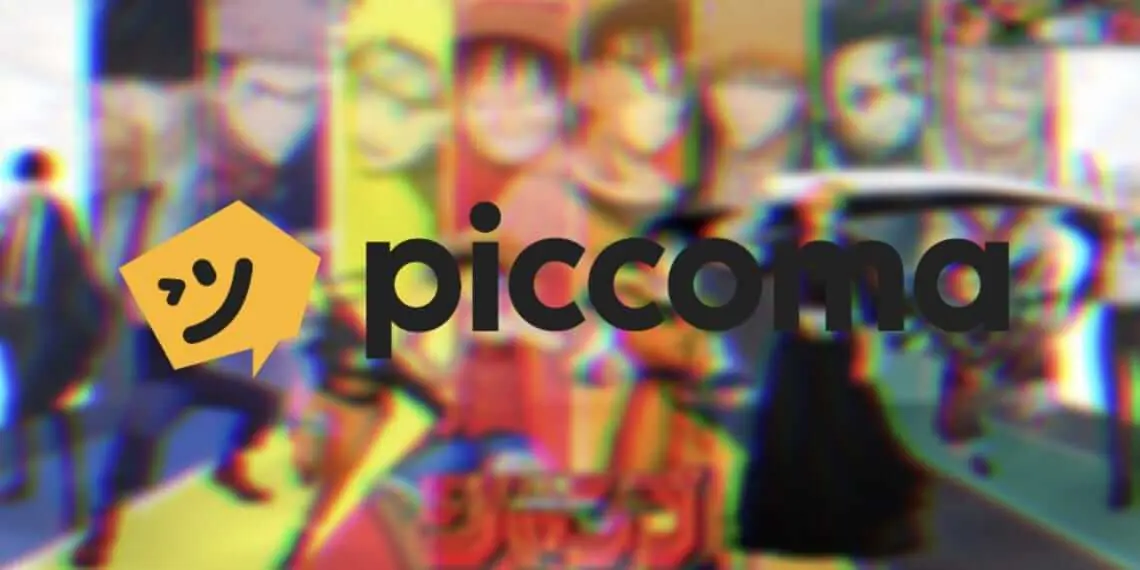Book banning has been around for ages, but according to the American Library Association’s Office for Intellectual Freedom, challenges to library, school and university materials skyrocketed in 2021. Where in 2018 there were 377, in 2021 the total. But the ferocious attacks haven’t stopped at books. Library staff, the members of the public who work hard to maintain equitable access to materials for all citizens, have been increasingly targeted and threatened. “Saving Comic Books in Libraries” panelists Jack Phoenix and Moni Barrette think that should have many of us concerned since challenges to books also represent challenges to intellectual freedoms and equitable access.
“We’re dealing with two pandemics right now. We’ve got an actual pandemic, and then we’ve got this epidemic across the country and in Canada, challenges to comics and graphic novels specifically where it’s a fight for censorship and intellectual freedom,” explained Phoenix, the Manager of Collections Development and Technical Services at the Cuyahoga Falls Library in Ohio and a graphic novel selector with library vendor Brodart. He cites state legislatures joining in the chorus of naysayers with threats to criminalize librarians for doing their job of providing content that patrons can choose (or not) to read.
Barrette, the incoming president of the ALA’s Graphic Novels & Comics Roundtable, in-house librarian for Comics Plus and co-founder of Creators Assemble!, cites an even more disturbing trend making the rounds of social media.
“One of the things that is happening is ‘parents,’ not necessarily people who are actively parenting and often they’re not even from the community that they say they are, but there is an epidemic of people who are banding together to challenge content. I had one come in at Comics Plus for a series called Peach Grow,” said Barrette. “It is curated appropriately in Comics Plus. It’s a multiple volume series and there’s like two pages that, out of context, makes it look like they’re just talking about child trafficking, but it’s still age appropriate for the audience in which it’s curated.
“However, a librarian who was offering that book through our services did receive a complaint from the community that I hadn’t seen before because folks are writing out the responses to these things and sharing them with one another,” she continued. “People who have no idea what these titles are, have never read them and never experienced them, are going ‘They’re putting pedophilia, child trafficking into these comics’ and getting them to the teams that are literally copying and pasting each other’s responses and looking for whatever libraries or schools have this content and complaining thusly. What’s also on those lists is a growing number, and that’s very concerning, of librarians’ and teachers’ names…we try not to take these things personally, but it becomes a little personal when they’re after your jobs or after your livelihood, and they’re accusing you of everything from just not being appropriate to being flat out pedophiles or criminals.”
As far as Phoenix and Barrette are concerned, libraries, both in schools and public, are about choice. And librarians are professionals who represent diverse viewpoints by providing content, such as comic books, to the public. Their job is not to cater to the few who find offense with material they dislike or disagree with. The public can choose to read the materials or not. Teachers can choose to use the materials or not. And parents can also choose to object what their kids read of what is used in their classrooms. Pure and simple, whether individuals choose to consume content boils down to a matter of choice.
The origins of comic book censorship
Challenges to comic books and libraries is not new. In the 1930s, 90% of all people under the age of eighty read comics. But psychiatrist Fredric Werthem believed that comic books were a serious cause of juvenile delinquency. His book The Seduction of the Innocent stigmatized comic books for decades. The stigmatization stayed with library workers, “gatekeepers” who continued to resist carrying comic books in their facilities until more recently when they became hip to the idea of embracing the medium.
Another blow facing the comic book industry was the problem of the intended audience. Many relegated comic books as reading material for kids only. To counteract the stigma, libraries resorted to calling comic books “graphic novels” as an attempt to detract from the juvenile labeling. Barrette, however, pointed to a more fundamental reason why comics provided such an easy target.
“There’s a sense that uncensored expression in comics has always been political…Martin Luther King’s first pamphlet was basically a comic to newspapers. That is the cartoon, his point of view in an illustrated fashion. So, with illustrations people who don’t even bother to read in depth take something out of context and say this is obviously bad because there’s two panels of something that I didn’t even read what led up to it. We’re going through the same thing with manga.”
In the 1960s, the American Library Association adopted the Library Bill of Rights that spelled out the right of library users to intellectual freedom. That meant a library’s primary purpose was to provide resources to groups of people that meet educational, cultural, and other needs. Despite the Bill of Rights, despite the popularity of certain titles and the controversies the books courted, naysayers continued to continue to challenge books based on wanting kids and others to “read real books.”
Books that generated positive buzz, whether through national awards or literary prizes and bestselling lists, became targets for censorship.
“As wonderful as it is to see these diverse comics and graphic novels being nominated for these things to be taken seriously, boom! Here comes someone wanting to challenge the content,”said Phoenix.
Barrette concurred and went even further to pinpoint a critical motivation for challengers—fear of change.
“Most folks who are challenging them aren’t going to have read a lot of this type of material. And then because they’re popular, they’re like, wait, this is changing people’s opinions on something or helping people learn about something. And that’s when the quiet part comes out.”
How the Outrage Machine can work in saving comic books in libraries
As graphic novel selectors with Comics Plus and Brodart, Barrette and Phoenix have had dealt firsthand with the challenges faced when curating lists of appropriate graphic novel titles and how to circumvent them. Barrette explained her strategy with her work at Comics Plus:
“I look for an unlimited simultaneous use access model. And not every publisher likes to have their comics available for every classroom to use at the same time for a low price. Then I would choose who would be of interest because our primary is K through 12…for adults I try to look for diversity in both the characters and the types of stories that we’re telling, anything that has resources. Now that there’s more educational guides or discussion guides or activities added to graphic novels for all ages.
“I look for things that add a little bit more quality and then reputable publishers, although some of the indie publishers are friggin’ killing it right now. So that’s really when you go deep. You start getting to know your publishers and you go, ‘I know I can count on these creators to always come up with great stuff.’ I can count on these publishers to come up with things that are appropriate, and I know their age appropriate, their age categorizations are going for the audiences they’re trying to reach.”
Phoenix stressed looking for a collection development policy that spells out how purchases are made and how items are reviewed. A policy that outlines how challenges are reviewed and determined is also important.
“The collection development policy usually comes with a Request for Reconsideration policy. And typically, there should be a procedure to go through to ask for something to be reconsidered for the library’s collection. You see something that you think doesn’t belong in this library. You raise your objection to a staff member. The staff member then sends you that form or points you in that direction of that form on your website. You go through that process, maybe it involves the board, maybe involves a committee, it involves the director, but there’s still supposed to be a process.”
Public advocacy and education are other tactics that help to preserve access to challenged materials. Attend a library board meeting to voice an opinion. Talk to the media. Support elected officials who support intellectual freedoms. Check out materials and read the content.
“I call it the Outrage Machine, the side that wants to put forth these challenges. They’re really good at taking to social media, taking to the media, putting a spin on things, showing up, making themselves so obnoxious that even if things don’t quite work out in their favor in the courts, they’re hoping that librarians just give up because we don’t want to deal with it anymore. And we stop buying titles that are about gay people, or black people or brown people or the immigrant experience. So, I would ask for you as the public to turn that Outrage Machine into your Outrage Machine. Gather likeminded people and take to social media to defend libraries and what we’re doing to defend these titles, and really pay attention and try to make the powers that be a little bit more afraid of you,” said Phoenix.
“The one important thing to remember is that it’s your library. Sometimes the opposition is trying to go with the argument that it’s their life or it’s their tax dollars, and that’s the best argument that they have, but it’s also your library and your tax dollars. So, if you don’t think that these items should be removed, then you have the right because it is your library and you get to say no, I’m okay with that. Don’t remove that.”
Miss any of our previous WonderCon 2022 coverage? Click here!







